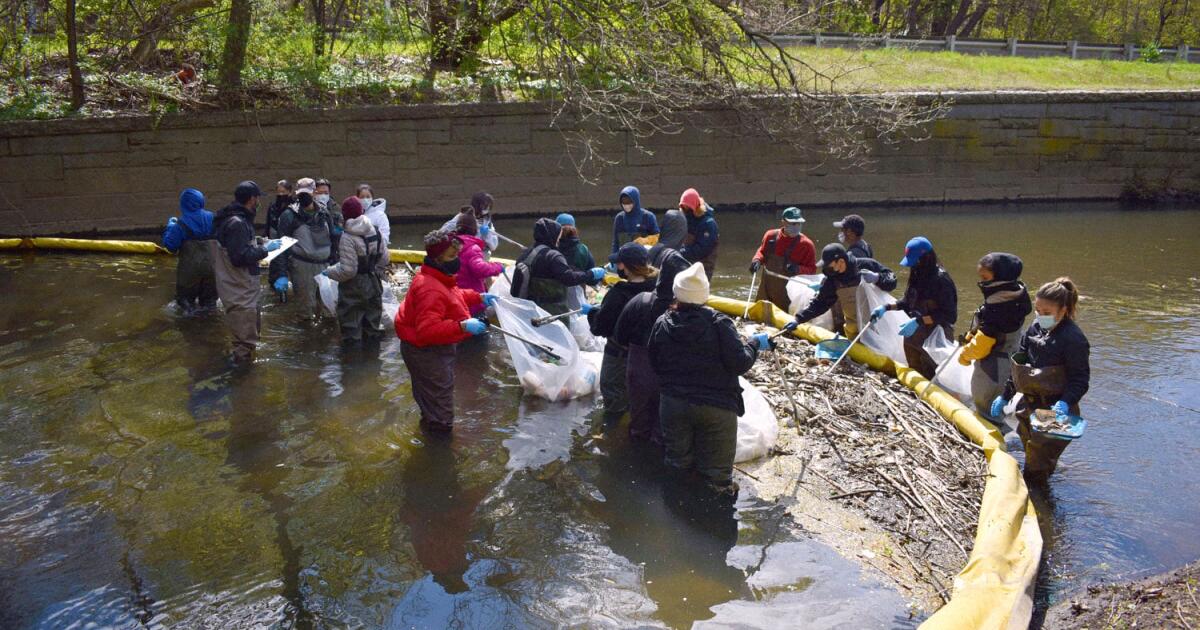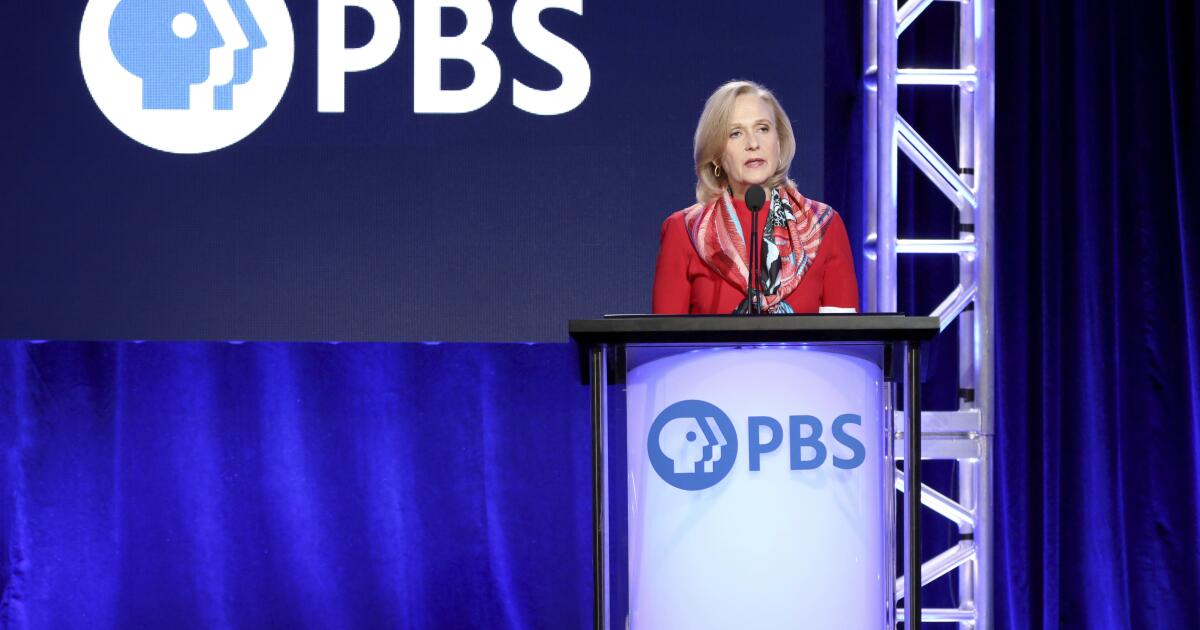In the nation’s poorest congressional district, federal funding cuts create perfect storm
NEW YORK — On a sweltering summer day, children leap between rocks along the Bronx River while cyclists pedal on newly paved paths. Kayaks rest on what was once an industrial dumping ground, now transformed into a bustling promenade along the city’s only freshwater river.
The Bronx River Greenway, a series of stitched-together waterfront parks built atop once largely abandoned and polluted wasteland, is a hard-fought victory for the country’s poorest congressional district — one that locals call a “beacon of environmental justice” built by federal dollars and water-pollution settlements from the borough’s wealthier neighbors.
Now, like thousands of nonprofits around the country, this organization’s future is in jeopardy. The Trump administration’s sweeping federal grant cuts have left nonprofits nationwide and the communities they serve in precarious straits. But few places face as stark a reckoning as the Bronx, where federal funding has proved indispensable for revitalizing green spaces, protecting survivors of domestic violence, and preventing youth violence.
Over 84% of the 342 nonprofits based in the Bronx rely on federal grants now at risk, according to an analysis by the Urban Institute. It’s a significant increase from the 70% of groups vulnerable to government defunding statewide.
In all but two of the country’s 437 congressional districts, the typical nonprofit could not cover its expenses without government grants. Nonprofits have increasingly served as contractors for government services — like operating homeless shelters — since the 1960s.
In the Bronx, if such grants were to disappear entirely, the borough’s nonprofits could face a collective deficit of nearly 30% — cuts that have begun to force layoffs and austerity on dozens of groups connecting Bronxites to low-cost health care, food assistance, and preschool slots.
“When America sneezes, the Bronx gets the flu,” said U.S. Rep. Ritchie Torres, the Democrat who represents the district. “I think we in the Bronx feel we have been and will continue to be the hardest hit by the impact of a Trump presidency.”
From revival to reversal
Nestled in a corner of parkland atop the site of an abandoned amusement park, the headquarters of the Bronx River Alliance is among the borough’s greenest buildings, boasting nature classrooms, samples of the river’s flora and fauna, and a storage space teeming with kayaks and canoes.
In March, the group received formal notice that it would lose $1.5 million in federal grants promised under the Inflation Reduction Act last year for improving water quality and climate-resilience projects. After years of rising momentum, cubicles now sit empty. Leaders held off on hiring in anticipation of cuts, and now they don’t know if they’ll be able to fill those roles.
“I’ve met some of the folks who were pulling cars out of the river in the ’70s and ’80s,” said Daniel Ranells, the group’s deputy director of programs. Back then, the area was a “dumping ground” so inundated with industrial waste, tires, abandoned cars, ovens, and microwaves that “folks didn’t really understand there was a river there.”
That has shifted dramatically in recent years thanks in part to decades of federal investment. Just south of its headquarters, the organization restored salt marshes along the riverbanks of a shuttered concrete plant.
In 2007, the first beaver appeared on the Bronx River in over 200 years — named “José the Beaver” in honor of former Congressman José E. Serrano, who helped direct millions in federal funds to groups dedicated to the river’s restoration.
“The Bronx River is a shining light of environmental justice,” Ranells said, and millions in federal funding over the years has helped “make it a destination” after years of neglect.
Progress frozen
Now staffers at the Bronx River Alliance describe a sense of “whiplash” in seeing hard-fought funds dry up and grant language scrubbed of any allusions to racial or environmental justice.
The Bronx River Alliance has joined other nonprofits in suing the Trump administration to unfreeze funds, but the uncertainty has already disrupted years of planning, a reality that has rippled across the neighborhood, leaving few organizations untouched.
Up the street from the Alliance, the office of the Osborne Association, a group that has worked to prevent youth violence for nearly a century, has grown quieter. In April, an email from the Bureau of Justice Assistance stated the remaining $666,000 of a $2 million grant “no longer effectuates department priorities.”
The cut thrust the nonprofit into “triage mode,” said Osborne president Jonathan Monsalve, who was forced to lay off three staffers and reduce the number of participants in a diversion program offering young adults facing gun charges an alternative to jail time.
“It’s a lifeline for young people, and it’s no longer there for 25 more of them,” Monsalve said. “Without another alternative, it’s 25 young people that will see prison or jail time, and that’s incredibly frustrating.”
Why the Bronx bears the brunt
The Department of Justice has canceled over $810 million in similar grants to nonprofits working in violence prevention. The Environmental Protection Agency attempted to cancel $2 billion in grants for environmental justice work.
Nonprofit leaders say the cuts hit hardest in the places that can afford them the least. In the Bronx, almost 30 percent of residents live in poverty, the vast majority of whom are Black or Latino, and nearly one in six schoolchildren experience homelessness every year.
“We’ve had decades of disinvestment in these communities, and we had been starting to see some meaningful investment and community-based solutions that were actually working,” said Monsalve. “And then all of a sudden that support just gets yanked away.”
The federal government, he said, is essentially telling these communities: “You aren’t a priority anymore. You don’t fit the plan.”
For decades, a million-dollar federal grant allowed the victim-service organization Safe Horizon to operate a program that stationed domestic violence advocates in the borough’s criminal court.
When the grant came up for renewal this year, it came with new restrictions that CEO Liz Roberts described as “so extreme, so broad, so radical” that the organization chose to walk away rather than accept conditions which would have prohibited supporting transgender survivors or treating domestic violence as a systemic issue.
It was an agonizing decision given the volume of domestic violence in the Bronx, Roberts said.
It means that hundreds of survivors “may not have the opportunity to talk to an advocate about their options, about their rights, or about their safety,” she said.
Filling the void
Roberts said she’s bracing for more cuts — federal funds make up about 24% of the group’s budget — that could force the closure of shelters or reductions to a citywide hotline.
As nonprofits nationwide grapple with similar losses, Roberts said private philanthropy and local governments will need to “make some smart and thoughtful and principled decisions about where they can help to fill those gaps.”
In places like the Bronx, finding alternative funding is especially challenging. “The not-for-profit sector is often fragile, and nowhere more so than the Bronx,” Torres said of the district he represents, where organizations tend to be more dependent on government funding than wealthier enclaves.
“Organizations spent hundreds of thousands of dollars simply to apply for a contract and hired staff and made all these plans only to see the written contract disappear,” Torres said. “It’s deeply destabilizing.”
Sara Herschander is a senior reporter at the Chronicle of Philanthropy. This article was provided to the Associated Press by the Chronicle of Philanthropy as part of a partnership to cover philanthropy and nonprofits supported by the Lilly Endowment. The Chronicle is solely responsible for the content.

